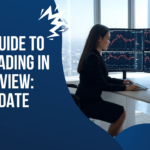In today’s fast-paced financial markets, automated trading has become an increasingly popular method among investors. But how does it work, and what makes it so advantageous compared to manual trading? Let’s explore its principles and key benefits.
How Does Automated Trading Work?
Automated trading is based on predefined rules and algorithms that execute trades without human intervention. Investors set specific conditions, such as price levels, trade volume, and technical indicators. When market conditions meet these criteria, the system automatically places buy or sell orders. This eliminates the need for constant monitoring and manual execution.
Advantages of Automated Trading
1. Eliminates Emotional Influence
In traditional trading, emotions like fear and greed can lead to irrational decisions. Automated trading removes emotional bias by strictly following preset rules, ensuring a disciplined and objective approach.
2. Increased Efficiency and Speed
AI-powered trading systems can analyze market data and execute trades in milliseconds, seizing opportunities much faster than human traders. This minimizes the risk of missing out on profitable trades due to delayed reactions.
3. 24/7 Market Monitoring
Unlike manual trading, which depends on human availability, automated systems operate around the clock. This is especially beneficial in global markets, where price movements occur across different time zones.
4. Improved Accuracy and Consistency
Automated trading eliminates human errors such as mis-clicks, delayed order placement, or inconsistent strategy execution. It ensures that trades are executed exactly as planned, increasing overall precision.
Comparison: Automated Trading vs. Manual Trading
To highlight the differences, here’s a comparison between automated and manual trading:
| Feature | Automated Trading | Manual Trading |
|---|---|---|
| Emotional Influence | None, follows preset rules | High, affected by fear and greed |
| Trading Speed | Instant execution | Slower, relies on human reaction |
| Market Monitoring | 24/7 monitoring | Limited to trader’s availability |
| Execution Accuracy | High, no human errors | Lower, subject to human mistakes |
| Time Efficiency | Fully automated, saves time | Requires constant attention |
| Adaptability | Can be optimized with AI & ML | Dependent on trader’s skillset |
Limitations of Automated Trading
While automated trading offers numerous advantages, it is not without risks:
- Requires Technical Knowledge – Developing effective trading algorithms demands expertise in both technical analysis and programming.
- Market Uncertainty – Unexpected market conditions, such as sudden crashes, may lead to strategy failures if the system is not properly optimized.
- Over-Reliance on Technology – System failures or latency issues could impact execution, requiring human intervention at times.
Conclusion
Automated trading is an innovative and efficient trading method that provides greater accuracy, speed, and 24/7 market monitoring compared to manual trading. However, investors should understand its principles, risks, and limitations before fully relying on it. A balanced approach—combining automation with human oversight—can help traders achieve consistent and stable asset growth.





ryb tTu bJy TjNEXS oQcq CVc
Excellent blog here! Also your web site loads
up fast! What web host are you using? Can I get your affiliate link to your host?
I wish my site loaded up as fast as yours lol
web page
Hello there! I know this is kind of off topic but I was wondering which blog platform are you using for this site?
I’m getting sick and tired of WordPress because I’ve
had issues with hackers and I’m looking at alternatives
for another platform. I would be fantastic if you could point me in the
direction of a good platform.
casino en ligne
If you are going for best contents like I do, just visit this web site everyday as it gives feature contents, thanks
casino en ligne
Greetings from Idaho! I’m bored at work so I decided to browse your website on my iphone during lunch break.
I enjoy the info you present here and can’t wait
to take a look when I get home. I’m shocked at how quick your blog loaded
on my mobile .. I’m not even using WIFI,
just 3G .. Anyways, awesome site!
casino en ligne
It’s hard to find experienced people about this topic, but you sound like you know what you’re talking about!
Thanks
casino en ligne
Hey I am so thrilled I found your webpage, I really found you by
mistake, while I was browsing on Askjeeve for something else,
Anyhow I am here now and would just like to say thanks for a fantastic post and a all
round interesting blog (I also love the theme/design), I don’t
have time to look over it all at the minute but I have
saved it and also included your RSS feeds, so when I
have time I will be back to read a lot more,
Please do keep up the excellent work.
casino en ligne
In fact no matter if someone doesn’t know after that its up to other people that they will help, so here it takes place.
casino en ligne
What’s up friends, its enormous piece of writing on the topic of teachingand
fully explained, keep it up all the time.
casino en ligne
I’ve learn a few excellent stuff here. Definitely
value bookmarking for revisiting. I surprise how much effort you put to
make this sort of wonderful informative site.
casino en ligne
It’s very easy to find out any topic on web as compared to textbooks, as I found this article
at this web page.
casino en ligne